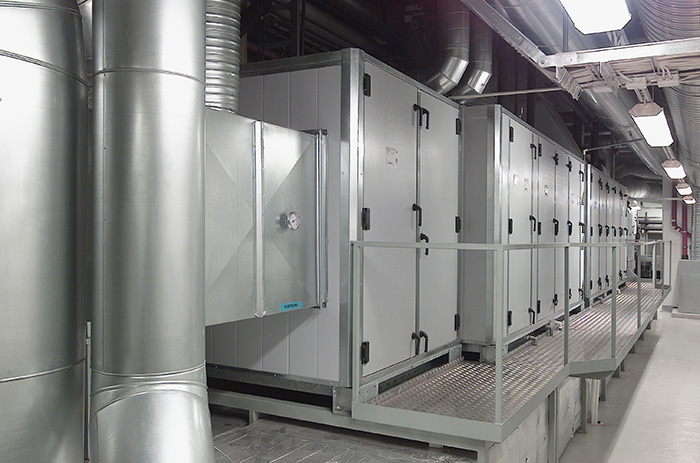How To Unlock The Hidden Energy Saving Potential In Your HVAC Systems

The HVAC systems in most stadiums are typically comprised of dozens to potentially hundreds of pumps, fans and AHUs, all of them powered by electric motors. Each of these motors can represent an easy and cost-effective way to save energy and carbon, and significantly reduce your energy bills, as ABB’s Chris Plumb explains.
Electricity costs have tripled since 2021, and show no sign of returning to 2020 levels any time soon. Against this backdrop, stadiums and venues are increasingly being forced to save as much energy as possible out of their assets to keep costs to a minimum and reduce their bills. Meanwhile, stadiums are also under pressure to improve their sustainability credentials, reduce carbon footprint, and ultimately reach Net Zero in the coming years. While some venues are taking impressive strides in this direction, one of the prime candidates for significant energy and carbon reductions is one of the most commonly overlooked.
A typical stadium, even the smallest ones, will be home to a number of electric motors. These power the pumps, fans and AHUs that make up the facility’s HVAC systems. HVAC applications typically have very long running hours, and as such will often consume large amounts of energy.
Each of the motors driving these applications is a potential opportunity to save vast amounts of energy and carbon. In some cases this can add up to tens of thousands of pounds in energy savings per annum. A recent survey by the ABB Energy Appraisal team at a large stadium in London discovered potential energy savings worth hundreds of thousands of pounds per year. Crucially, these can be achieved with minimal investment required, and with typical payback times of as low as six months.
The reason why these opportunities exist is because the vast majority of motors are run without any kind of speed control, for example direct on line, star delta or even soft starts. This means that they’re either on or they’re off, and will run at the same speed irrespective of demand. For HVAC applications, airflow can be moderated using mechanical means such as valves and dampers, but this still means that the motors are running at full speed, wasting potentially vast amounts of energy for every moment they’re in operation.
A variable speed drive, also known as a drive or an inverter, is a device that electronically controls the motor’s speed, allowing it to instantly ramp up or down to match actual airflow demand. Pumps and fans are centrifugal applications, meaning the Cube Law applies. This means that a small reduction in speed corresponds to a proportionally higher reduction in energy usage.
In practice, it means that running a pump or fan at 80 percent speed will use just 50 percent of the energy compared to full speed. A 10 percent speed reduction can achieve savings of up to 27 percent. Even small reductions in speed throughout the day can result in significant savings, particularly when you extrapolate these across an entire fleet of pump and fan motors.
Motors have a fairly long lifetime, and consequently many are installed and then ignored until something goes wrong. However, in the last decade, electric motor technology has come on significantly, with the latest generation of SynRM motor and drive packages capable of achieving up to IE5 efficiency levels, offering 40 percent lower energy losses compared to an equivalent IE3 motor from 10 years ago.

Even motors which already have a drive installed can sometimes be neglected, or configured incorrectly. Indeed, at ABB, we’ve encountered countless examples of drives being run at 50 Hz, which is unlikely to save any energy. However, with some small tweaks, the wire-to-air efficiency of a pump, fan or AHU can be significantly improved with no negative impact on its performance or effectiveness. Running at lower speeds where appropriate also reduces strain on components, prolonging the life of drivetrain components.

For more information, or to book your assessment, visit: https://campaign.abb.com/EnergySnapshot_Web, or contact me directly at This email address is being protected from spambots. You need JavaScript enabled to view it..











































